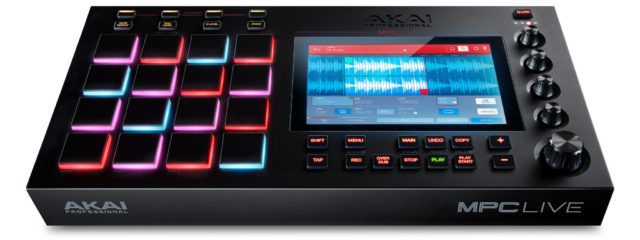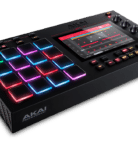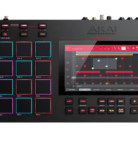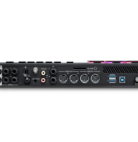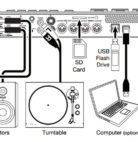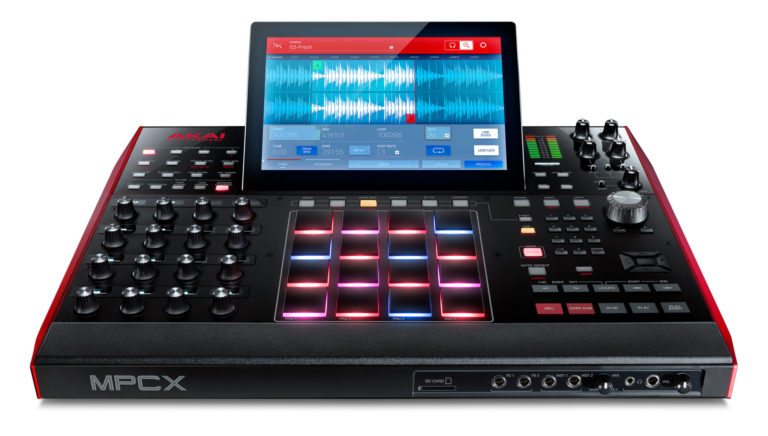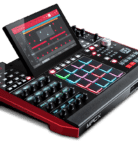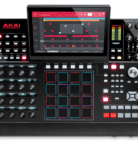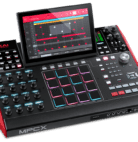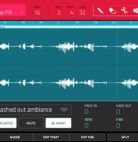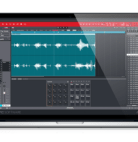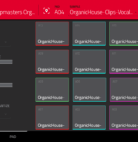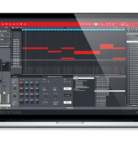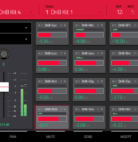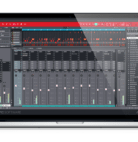Akai Professional has historically been one of the most formative brands for production workstations, specifically their MPC lineup. But many of the recent units introduced in that line have been controllers, requiring a computer to use. Today the company is going back to their roots, announcing two new standalone products – the MPC Live and MPC X. Keep reading for the details.
MPC Live
- Product: MPC Live
- Price: $1,199 (order from DJ Techtools)
- Availability: Now!
When the MPC Touch was announced in October of 2015, this is what every producer was hoping that model would be. This is a completely standalone unit with a full color touch screen, and powered by Akai’s new MPC 2.0 (more on that later).
This is the smaller of the two new MPCs announced today – coming in at just 5.5 pounds and powered off an internal rechargeable battery. It’s a bit more expensive than other portable production units like the Novation Circuit or Teenage Engineering OP-1, but the feature set is more akin to a production computer than either of those.
Here’s the full feature set that Akai has shared with us in their press release:
- Stanalone MPC, no computer required.
- Also acts as a control surface for MPC 2.0 software
- 7-inch full-color multi-touch display
- Internal, rechargeable lithium-ion battery
- Turntable (RCA) inputs with ground peg
- 16GB of on-board storage (over 10GB of sound content included)
- User-expandable 2.5” SATA drive connector (SSD or HDD)
- 2 pairs of full-size MIDI inputs and outputs
- 2GB of RAM for sampling
- SD Card slot, 2 USB-A 3.0 slots for thumb drives or MIDI controllers
- Forthcoming support for Ableton Link and WiFiMPC X
- Product: MPC X
- Price: $1,999 (Pre-order from DJ Techtools)
- Availability: Now!
The MPC X is clearly designed to be the more complete studio version of the two MPCs announced today – and it’s a welcome upgrade for many users who want a full-size MPC but never really found the computer-anchored MPC Renaissance to be an attractive option. Beyond a large ten inch screen, it also has dedicated buttons for the menu, master encoder, and 16 touch-sensitive assignable pots with OLED displays.
Studio producers can add their own hard drive with the SATA connector, and take advantage of MIDI I/O ports. Despite a studio-centric feature set, the MPC X does have the same internal rechargeable battery – if you want to use it in the wild, not a problem. Here’s the full feature set:
- Standalone MPC – no computer required
- Also acts as a control surface for MPC 2.0 software
- 10.1” full-color multi-touch display
- Internal, rechargeable lithium-ion battery
- 2 RCA phono inputs with ground peg
- 16GB of on-board storage (over 10GB of sound content included)
- User-expandable 2.5” SATA drive connector (SSD or HDD)
- 4 full-size MIDI inputs, 2 full-size MIDI Outputs
- CV/Gate outputs enabling the analog control of modular gear, such as classic synths
- 2 USB-A 3.0 slots for thumb drives or MIDI controllers
- Forthcoming support for Ableton Link and WiFi
MPC 2.0 Software
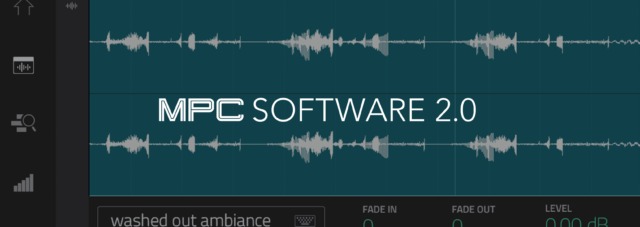
With this new lineup of standalone MPCs, Akai has also introduced a new version of their new production software. This is the software that runs on the MPC Live and MPC X, but it also works on its own as a DAW or as a VST/AU plugin.
The MPC 2.0 software is a major overhaul of the previous version, with a brand new graphical interface as well as:
- Audio track recording and real-time audio warping
- Streamlined/more efficient MPC workflow
- Audio and MIDI drag and drop
- Enhanced QLink control
The software is bundled with the Akai Professional MPC hardware – and will first launch in Q1 alongside the new MPC Live and X. It will be available “as an update for existing MPC customers at a later date, price TBD.”
Wondering why there’s so much new gear news on DJTT right now? Companies are rolling out their new products ahead of the NAMM 2017 industry convention. We’re giving DJTT readers the first coverage and insights into what’s coming out: See all of our NAMM 2017 coverage here.


